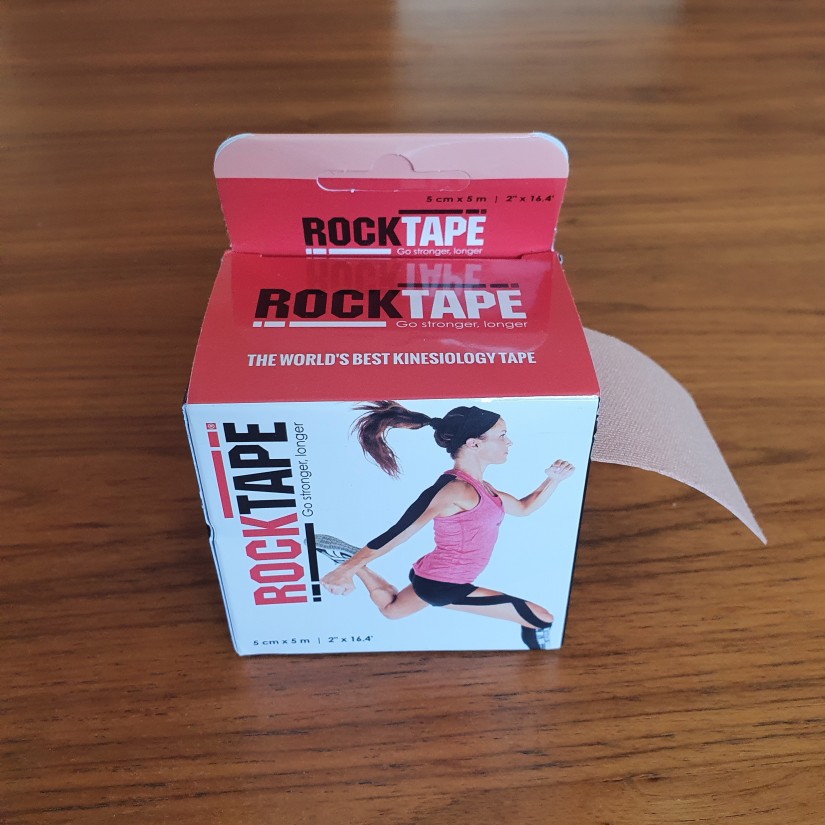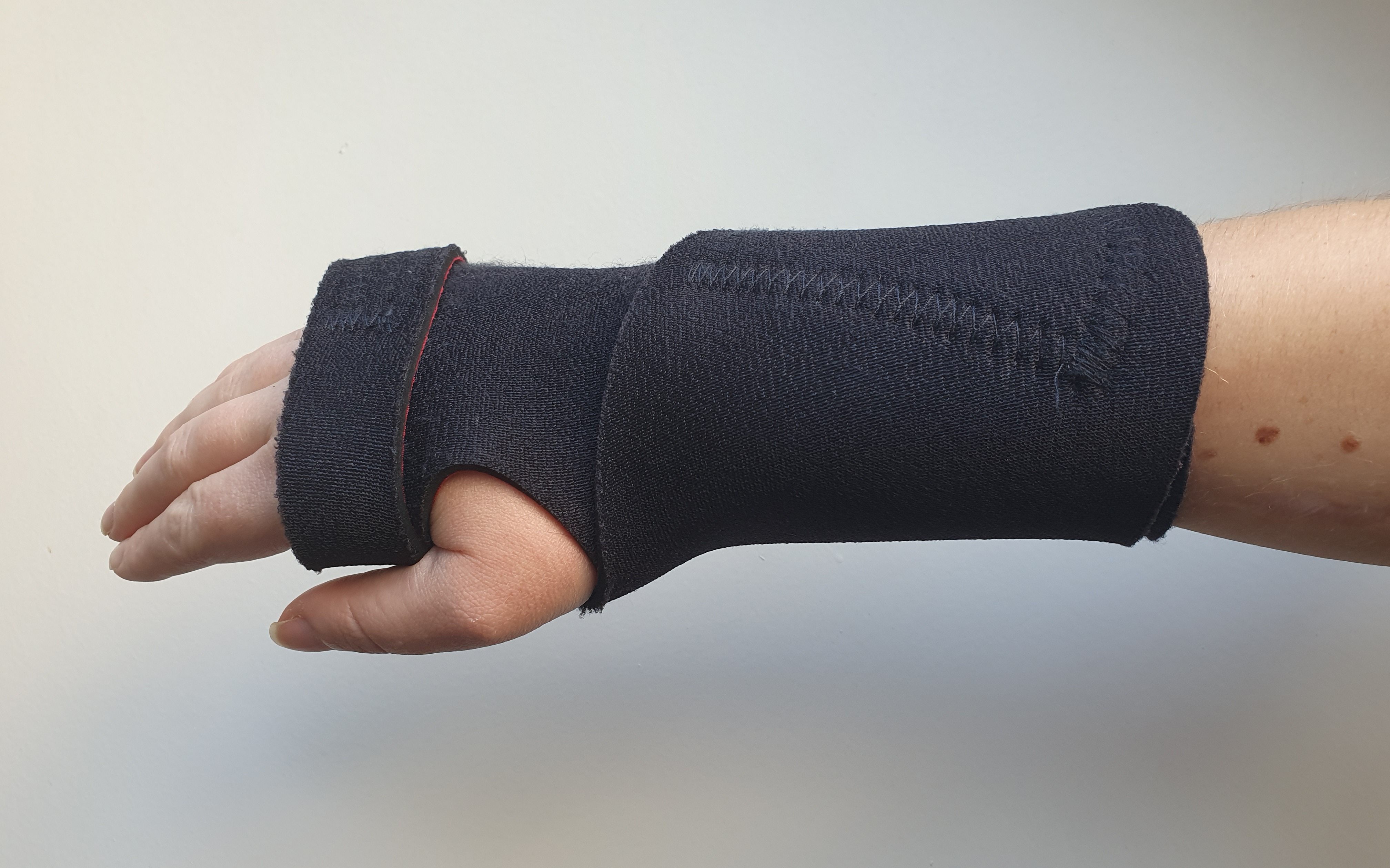Swimming is a great, low-impact form of exercise that gives a full-body workout. I knew that if I could stabilise my wrist enough, swimming would help me to build up strength in my arm that is still weakened after a fracture and nerve damage from a road accident. I tried several ways to stabilise the wrist, and found some great solutions.
Disclaimer: This blog post is based on my experiences. I am not a medical professional so always check with your doctor before trying new things that could aggravate your medical condition.
Support Tape (Lightweight Support)
Physio tape/ kinesiology tape/ sports tape is adhesive and slightly stretchy. It can be applied in different ways to best support muscles or joints during exercise. A waterproof tape should last for at least one swim session. Because this tape is designed to provide support without restricting movement, it’s on the lightweight side. Personally, several layers of tape wrapped around my wrist and crossing my palm were not enough to prevent my wrist subluxing when swimming.
If you have sensitive skin, tape might not be suitable for you.

Neoprene Splint (Medium-High Support)
Neoprene splints are a comfortable support that can easily be removed and reused. Neoprene is slightly buoyant in water, and heavier when saturated when lifted out of water. For this reason, wearing a splint on just one wrist gives a slightly lopsided feel, especially when swimming frontcrawl, butterfly or backstroke. It feels less odd in breaststroke and is otherwise quite easy to adjust to.

Using a neoprene splint with a metal insert will restrict wrist movement the most, giving the most support. A metal insert will lock the wrist so that the back of the hand is slightly drawn backwards towards the wrist. Although possible to swim in this position, if you don’t require so much support, using a wrist wrap or splint without a metal insert will allow the wrist to move into a more streamlined swimming position. Click here for my reviews of different types of wrist splints. You could also combine a splint with support tape underneath.
Chlorine will damage the elasticity of the neoprene splint over time so it is important to rinse well after every use.
Forearm Fulcrums and Bolster Paddles (High Support)
Forearm fulcrums and bolster paddles are swimming aids designed to lock the hand and wrist in the optimum position for swimming (early vertical forearm position, or EVF). As well as supporting your wrist, they will improve your technique! All main strokes (breaststroke, frontcrawl/freestyle, backstroke, and butterfly) are possible using these swim aids. Because they alter your swimming style, it is recommended to try them out over short distances at first.
I use the FINIS Forearm Fulcrums which pass over the back of the forearm, under the wrist, and across the back of the hand in a figure 8 loop to lock the wrist in position. Rubber at the inside of the wrist and back of hand and arm prevents the Forearm Fulcrum from slipping. Because there is no fabric involved, they are very easy to care for. They come in two sizes: Junior for teens and petite adults, and Senior. I tried both sizes and although both worked for me, the Junior size was a better fit and didn’t require so much tension to hold the fulcrum in place when swimming.

FINIS Forearm Fulcrum Pair in Package 
FINIS Forearm Fulcrum Junior on Right Arm
I have palmar mid-carpal wrist instability and can happily swim using these without any subluxations or dislocations as my wrist is unable to move up or down when they are in place. I also have a partially-trapped median nerve, and preventing my hand from moving also helps to reduce nerve irritation and pain. The FINIS forearm fulcrums enabled me from not being able to use my right arm at all, to swimming 500m using both arms the first time I used them.
The FINIS Bolster Paddles are designed with the same goal of stabilising the wrist in the EVF position with a solid hand paddle to increase water resistance. The plastic paddle is secured around the forearm with two velcro straps, and the fingers are held in place by a rubber strap. I haven’t had the chance to try them yet so please leave a comment if you have/haven’t found them useful.







